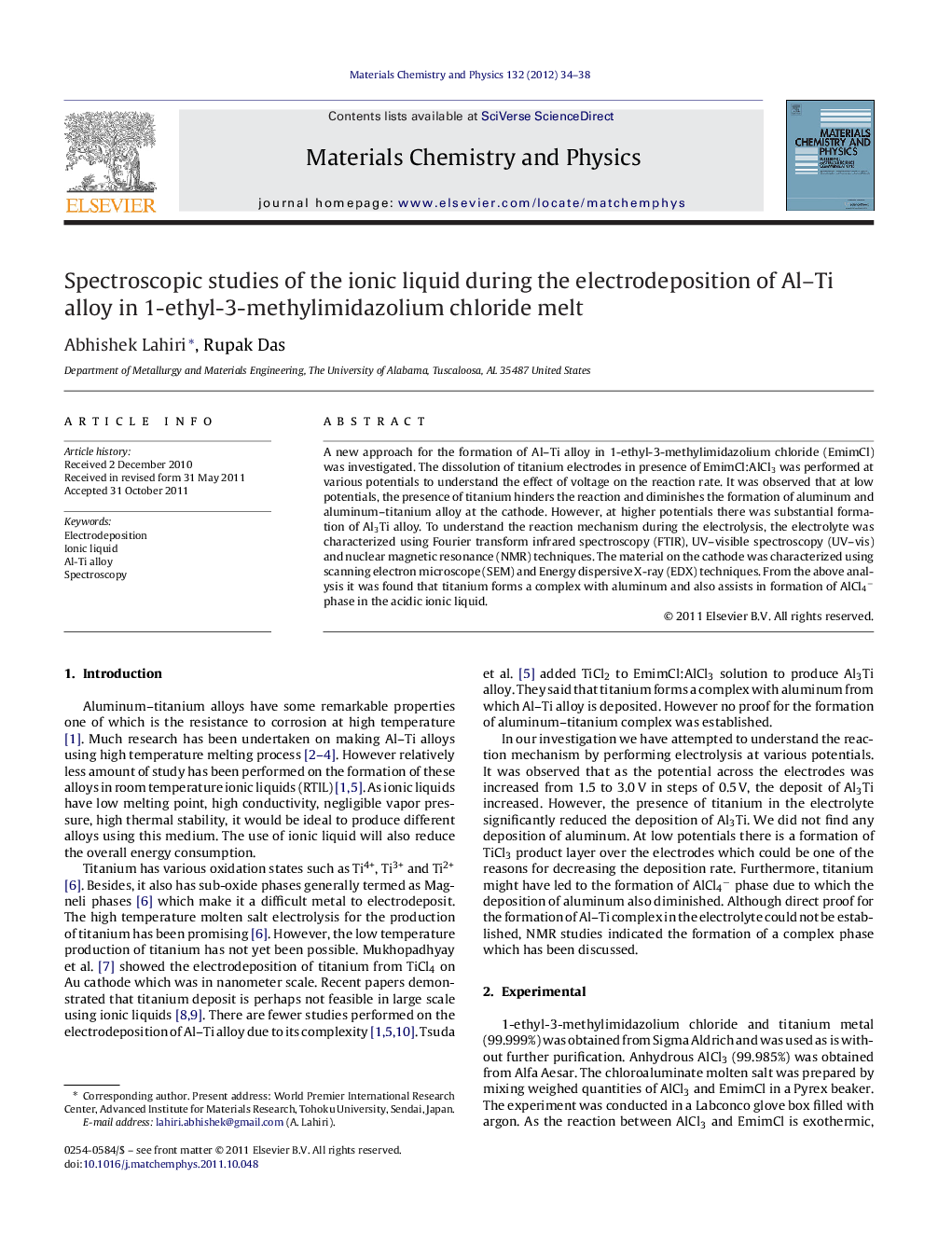| Article ID | Journal | Published Year | Pages | File Type |
|---|---|---|---|---|
| 1523318 | Materials Chemistry and Physics | 2012 | 5 Pages |
A new approach for the formation of Al–Ti alloy in 1-ethyl-3-methylimidazolium chloride (EmimCl) was investigated. The dissolution of titanium electrodes in presence of EmimCl:AlCl3 was performed at various potentials to understand the effect of voltage on the reaction rate. It was observed that at low potentials, the presence of titanium hinders the reaction and diminishes the formation of aluminum and aluminum–titanium alloy at the cathode. However, at higher potentials there was substantial formation of Al3Ti alloy. To understand the reaction mechanism during the electrolysis, the electrolyte was characterized using Fourier transform infrared spectroscopy (FTIR), UV–visible spectroscopy (UV–vis) and nuclear magnetic resonance (NMR) techniques. The material on the cathode was characterized using scanning electron microscope (SEM) and Energy dispersive X-ray (EDX) techniques. From the above analysis it was found that titanium forms a complex with aluminum and also assists in formation of AlCl4− phase in the acidic ionic liquid.
Graphical abstractAl3Ti alloy in EmimCl forms via an Al–Ti complex which has been established by characterizing the electrolyte using FTIR, UV–vis and NMR techniques.Figure optionsDownload full-size imageDownload as PowerPoint slideHighlights► We show the possibility of electrodepositing Al–Ti alloy using ionic liquid electrolyte. ► The reaction mechanism was evaluated using UV–visible spectroscopy, FTIR and NMR studies. ► From the spectroscopic studies the formation of a Al–Ti complex with ionic liquids was evident.
